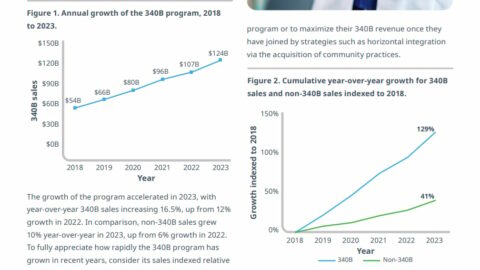I want to thank Peter Neumann and the rest of the Tufts CEVR crew for letting me attend their annual meeting yesterday. I learned a ton, including a very important life tip: if you call a paper on modifications to the discount rate “useful” but “tremendously dull,” economists will clown on you nonstop.
This Health Affairs Forefront piece about Medicare price controls is worth clipping and saving. It’s written by a team led by Duke-Margolis’ Mark McClellan and SSR Health’s Richard Evans, so you know that the people involved know the score.
McClellan, Evans, and colleagues outline a hugely important point, highlighting that, for most of the first 10 drugs, the “ceiling” price is going to be the existing net price and that, unless the government picks clinically inappropriate comparators, it’s going to be hard to cut those prices much further: “The existence of fairly close Part D net prices means that it may be difficult to justify substantial reductions from the selected drug’s current net price and thus larger savings based on a comparative effectiveness determination.”
The article has a handful of other fragments that are worth keeping in mind as the final prices come into view.
First, there’s a reminder that even if the “negotiated price” is at or near the existing net price, that’s not a failure of the process or a move with limited impact. Getting the list price to match the net price would be an enormous boon for patients, even if it doesn’t change government spending that much.
Second, the analysis warned that there might be formulary games played, such that competitors to the price-controlled drugs could slash their net prices in a bid to get more favorable formulary placement than the “negotiated” meds. In theory, CMS could police that, but McClellan & Co. pointed out that “it has not yet provided guidance on how it will do so, nor on the consequences for plans’ undesirable behavior.”
Sometimes, I see a story about drug prices, and it fills me with hope that we can have a rational discussion on the topic. It doesn’t happen often, but when it does, it’s worth celebrating.
The article that has me brimming with optimism is this Ed Silverman piece in STAT about a small drug company called Harrow that just boosted the list price of its eye medicine from $161 a unit to $944. As the headline points out, that’s a 486% increase.
Normally, this would cause all manner of consternation, but Ed plays it pretty straight. It turns out that $161 a unit — for a medicine that is only given once or twice — is economically infeasible, and if you want a stable supply, the drug needs to be priced higher.
The company laid this argument out clearly and transparently to analysts, and everyone seems to have accepted that, yeah, this all makes sense. Vanderbilt’s Stacie Dusetzina, who has a pretty good nose for spin, told STAT she wasn’t particularly bothered: “Paying $200 or $250 isn’t something you’re likely to be excited about. But given the importance of the treatment, I think most people will probably think it’s worth that amount of money if it’s going to help them see,”
It’s a sign that drug pricing decisions, even ones that have the potential to be demagogued, need not be hidden. If there’s a good explanation, the best path forward may be to give it.
Radical idea, I know.
Tim Dube at PCMA pointed out to me that the White House has completed its review of the new rule governing 340B disputes, suggesting the rule could hit soon. As a reminder, the process of coming up with a dispute resolution process has been a bit of a goat rodeo, with HHS’ first effort getting thrown out in court for being a ridiculous kangaroo court.
I don’t think it’s news, but Samsung Bioepis just dropped its quarterly biosimilars report, and it looks like biosimilar market share in the Humira market is up to … 4%. BioSpace has some useful background, but I’m still baffled about why this isn’t a health policy cause célèbre. The impact here is so much greater than insulin, and the system is, in some ways, broken even worse, and yet …
Quote of the week: “When you’ve got AOC and Marjorie Taylor Greene voting the same way on something, you’re screwed as an industry,” said Jeff Mortier, a partner with Farragut Partners, on PBM reform.
If this email was forwarded to you, and you’d like to become a reader, click here to see back issues of Cost Curve and subscribe to the newsletter.





